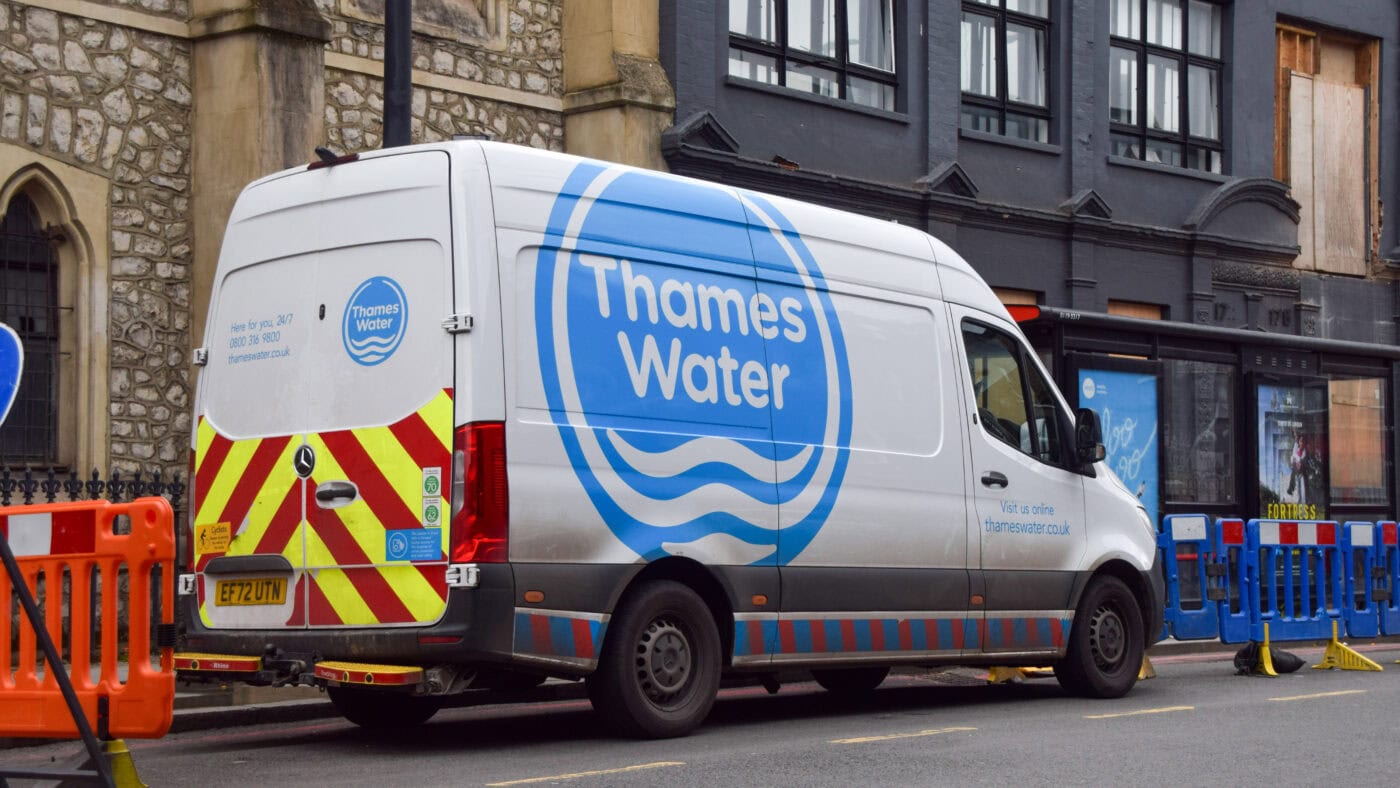The water business continues to present big problems. Thankfully, the new government says it’s not going down the road, which John McDonnell and Jeremy Corbyn wanted us to take, of nationalising this £100 billion industry. But the main regulator Ofwat’s proposal to limit price increases to an average of just £19 a year until 2030 will not allow much in the way of new investment. It’s a third less than the industry was asking for.
The disastrous management of Thames Water, which borrowed £14bn against a revenue of about £2bn a year, and is projected to run out of cash by the end of next year, has cast a huge shadow over the whole of our privatised water industry. But all sixteen water companies have faced some similar problems: hosepipe bans in a drearily rainy country, frequent Niagara-style leakages, regular sewage spills polluting rivers and beaches and giving bathers the runs and worse.
What’s the problem? Well, plenty would say our water-related woes are down to predatory capitalists ripping off helpless customers.
But the water industry in England and Wales is hardly rampant Wild West capitalism. It’s a heavily-regulated business facing major problems.
Ofwat juggles at least four objectives. First, in the face of local monopolies for domestic consumers (businesses do have some choice of suppliers), keeping prices down to tolerable levels. Second, ensuring that water suppliers maintain and improve drinking water standards. Third, making them expand water sources and reduce leakages. And finally, getting them to cut back seriously on those awful sewage spills whenever it rains heavily.
Remember that this juggling act takes place while increasing demands for water face a limited supply. No new reservoir has been created in 30 years, with proposals being hobbled by bureaucracy and Nimbyism. Over that period, population has grown by 10 million and we use far more water – with multiple bathrooms in homes and omnipresent washing machines. And (not so you’d notice) people generally insist on taking baths and showers every day in a way which our grubbier predecessors couldn’t afford. We need 2bn more litres a day than in the 1990s.
Not only that, but our increased population also needs to go to the toilet: this involves more sewage than ever before, often accompanied by unwanted wet wipes and other gunk which creates pipe-blocking fatbergs. Meanwhile, rainwater runoff has become more problematic. Houses have foolishly been built on floodplains, while hundreds of thousands of homeowners have concreted over their gardens to provide parking spaces, or replaced verdant lawns with plastic astroturf.
This means that the capacity of land to absorb rainwater has been reduced. More water thus drains into the sewers and has to go somewhere. That somewhere is, all too often, our watercourses. Hence the polluted rivers and dying fishes. We need to construct more overflow storage, but in the short run the only alternative would be to let the mess back up into our homes.
All of this, of course, in the context of an ancient infrastructure – particularly in London, where there is still heavy reliance in some areas on Joseph Bazalgette’s wonderful 19th-century sewers. Hundreds of miles of supply pipes probably need replacing, so leaks are inevitable. To stop all leaks would be massively expensive. ‘Zero leakage’, like most zero targets, is ill-informed and wishful thinking.
Ofwat has to prioritise. It has certainly managed to keep water prices down in real terms, and the quality of drinking water now meets European standards, which it didn’t twenty years ago. Leakages, though still too high, have been significantly reduced. Some progress has been made on reducing sewage overflows, but there are far too many.
There have been some notable investments funded by a mixture of public and private capital. Take the almost-completed Thames Tideway Tunnel. Costing almost £5bn, this 24 foot diameter monster runs from Acton down to Stratford, and on to the treatment plant at Beckton. It should prevent overspill into the Thames from more than 30 current outlets. But it’s taken years and occupied a huge chunk of the specialist workforce, the limited size of which is another constraint on rapid improvement.
So there have been achievements, but of course they’re not enough. Arguably, keeping water prices down has not been the right approach. Privatisation in 1989 provided an initial boost to investment. But companies can only continue to invest if they recoup the money they lay out in higher future revenue. With controlled prices, this is difficult and encourages shortcuts. Rather than raising costly new equity funding, Thames Water took advantage of low interest rates prior to lockdown to run up debt to meet Ofwat’s targets. Now reality has caught up with them. Belated attempts in recent weeks to bring in more equity to mitigate the problem have understandably proved difficult.
Ultimately the public will have to pay for the improved standards we all want, but politicians avoid articulating this. The current set up encourages the fantasy that shareholders will update this massive industry’s ancient infrastructure for free. Quibbles about bonuses and ‘excessive’ dividends – which the regulator does monitor, and to be fair has increasingly intervened over – are irrelevant.
The new Labour government’s reluctance to go for the nationalisation many of its supporters crave is understandable. Apart from the colossal cost and organisational upheaval involved, sensible members of the government will be aware that having direct control over a nation’s water is no panacea.
In Northern Ireland and Scotland, water remains in government hands, while in Wales a non-profit company operates. A model for England? Hardly. Northern Ireland’s industry has been chronically underfunded and has a poor record on leakages. Meanwhile, Scotland has a growing sewage spill problem. In Wales, we see the same sort of complaints we get in England.
Nor is the picture obviously better in continental Europe where water is almost always a state responsibility. Water prices are significantly higher in Italy, France and Germany than here. Germany and France have major river pollution problems. And bear in mind that too-high leakage numbers here are still well below the European average.
Costs would be reduced with no dividends to pay, of course. But government funding has a rising cost as it pushes the limits of its borrowing capacity. Moreover, past experience of nationalised industries of all kinds suggests that productivity growth would be slower than under commercial pressures. Although hidden in general taxation, costs would thus rise faster than before. We’d indirectly be paying more for water.
And once again, we’d be dependent for investment on what the Secretary of State for Environment, Food and Rural Affairs could cajole the Treasury into providing. Good luck with selling a boring old water pipe as the NHS, schools, defence and a thousand and one more exotic supplicants clamour for funding.
There’s much wrong with our water industry. But the answer lies with improved regulation, a sharp rise in the price of water services, and far greater realism from politicians and a public which continues to live in dreamland.
Click here to subscribe to our daily briefing – the best pieces from CapX and across the web.
CapX depends on the generosity of its readers. If you value what we do, please consider making a donation.


